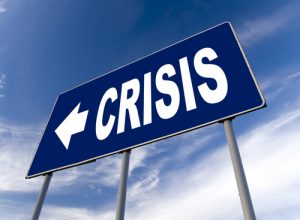This video takes a closer look at domestic abuse.
Please also review AIHCP’s Crisis Intervention Specialist Training program. Please click here
This video takes a closer look at domestic abuse.
Please also review AIHCP’s Crisis Intervention Specialist Training program. Please click here
Obviously crisis counseling is sometimes on the scene of the event. It is emotional first aid that attempts to restore equilibrium and mobility to the person. It is short term in its plan and it briefs the individual and carries through necessary tasks to help the person return to pre-crisis state. It also looks to help the person find orientation and resources to help avoid future crisis and find resolution to what caused the crisis reaction.

In this blog, we will look at crisis counseling in settings where intake occurs and how counselors work to help individuals leave the state of crisis. In these cases, the individual is brought in by the police, or rescue and the person requires mental care until able to be released. These types of counseling sessions differ greatly from traditional counseling settings. They still are not long term but they do look to alleviate crisis as much as any work on the scene itself. In addition to reviewing these types of crisis counseling settings, we will look at the efforts to better concert the police with mental health professionals in ensuring mutual safety of first responders and those in crisis.
Please also review AIHCP’s Crisis Intervention Specialist Program, as well as its Substance Abuse Specialist Program for qualified professionals in Human Services and first response.
Many mental health community centers are equipped to handle walk-ins, police escorted individuals in crisis, family admitted or social service recommended cases (James, 2017, p. 100). Like the crisis specialist in the field and on the scene, these professionals provide the same type of de-escalation model to help the person find equilibrium and mobility. They can also keep the person a few days if necessary and later coordinate with case managers to ensure the person receives continued observation, medication, or future counseling. Some facilities are 24 hour facilities, while others have emergency call centers beyond the regular hours (James, 2017, p. 102).
Upon entry into a facility, a person is assessed across the range of the triage scale to determine if someone is mildly or severely impaired. For more severe cases, a senior technician is called upon to help the person. Crisis specialists will also try to receive a case history of the person to better determine the onset of crisis. If mental pathology is present, a psychiatrist may be called to better meet the needs of the person (James, 2017, p. 100). James also references that those who face more severe mental fragmentation will be committed until safe to self and others (2017, p. 100).
The initial intake interview is a key process where questions and basic crisis intervention tasks can be completed. If the person is appraised negatively with a high level of lethality as well as drug use, then the person will need to stay longer. The clinician or team following the intake interview, prepares a disposition that describes the case as well as suggestions for treatment. In some cases, the facility will supply the person with a psychological anchor. This refers to a professional who will serve as their case worker, advocate or contact person (James, 2017, p. 101). In some cases, the individual will need short term disposition which meets the immediate physical needs of food, water or shelter. The Department of Family Services plays a big role with social workers to ensure the proper government entities meet the needs of the person. However, sometimes, long term disposition occur where the person needs long term care plan which includes counseling abd medication to help the person deal with future issues and crisis (James, 2017, p. 101).
Since crisis is about mental and emotional first aid that looks to stop emotional bleeding, its goals and procedures to reach those goals differ greatly from long term counseling and cases. James lists numerous differences between these two types of mental health models. In regards to the initial tasks themselves, there is a large difference. Crisis counseling looks to ensure client safety and assess lethality initially, while long term looks to prevent future problems. Where crisis counselors look in the first task to form a bond with the person in crisis, long term counselors look to correct issues with sound and tested evidence based treatments. Where crisis counselors help the person define the immediate problem, long term counselors help provide systematic support for that problem. Where crisis counselors provides support to help calm the person in crisis, long term counselors help facilitate growth in the healing process. Where crisis counselors look to help those in crisis see alternate options and develop a plan, long term counselors look to re-educate and help clients express and clarify emotions. Where crisis counselors resolve with commitment to plan and follow up, long term care counselor continue treatment with resolving issues, accepting realities, reorganizing attitudes and working on maximizing intellectual resources to deal with issues (2017, p. 98).

Crisis intervention specialists utilize diagnosis via the triage method looking at the affective, behavioral and cognitive issues on the spot and face to face, while long term counselors work with a detailed case history as well as observation throughout a period of time with most patients not experiencing a state of acute crisis. Where crisis specialists treat acute trauma and help to stabilize, long term counselors look at the underlying causes for issues over an extended period of time. Where a crisis specialist’s plan is to meet the immediate physical and emotional needs to stabilize a person, a long term counselor’s plan is a comprehensive effort that covers time and numerous personal and social environments that looks to help alleviate a non acute issue. (James, 2017, p. 98). Hence crisis intervention specialists deal with individuals who are affectively in an impaired state, cognitively unable to think logically and behaviorally out of control and pose a threat to themselves and others, while a long term counselor deals with individuals not in impairment emotionally and is able to think and socially behave (James, 2017, p. 99). This means that crisis professionals whether on the scene, or in a facility helping a person in crisis are working at a mental emergency level where decisions and observations must be quicker and plans may need be adjusted quickly due to safety issues (James, 2017, p. 99)
Obviously dealing with those in crisis requires quick thinking and assessment but it also entails dealing with individuals who are a lethal threat to self and others, as well as many times on multiple types of drugs. Crisis professionals deal with chronic mental illness, acute interpersonal problems due to relationships and other social factors, and combinations of both (James, 2017, p. 97). While long term care counselors deal with these type of issues, usually the person is not actually intoxicated, or in a state of mania, or suicidal with gun in hand during a session. Many crisis counselors deal with an array of acute issues that include those who are constantly in a transcrisis state that can be activated at any moment. Those facing multiple stressors or anxiety or depression can easily fall into a state of acute crisis in these cases. In addition to transcrisis, many individuals in chronic crisis will face regression and fall back into old issues that led to crisis. Others may face issues with possible termination of future sessions with counselor since the counselor has become an anchor (James, 2017, p. 108). In addition to dealing with those in transcrisis, many counselors deal with individuals with addiction issues and psychotic breaks with reality. One common type of malady that corresponds with crisis in Borderline Personality Disorder. This disorder prevents the person from past trauma to achieve stable moods from hour to hour, day to day or month to month. They can erupt into anger or sadness over minor things they perceive as slights. Many are also impulsive, self destructive, confused with goals, unable to maintain self esteem, possess suicidal ideation, and have destructive choices in relationships (James, 2017, p. 111). Obviously this type of disorder is a chaotic recipe for crisis calls for the police and later mental health intervention.
These types of issues can lead to big problems with counselors and those in crisis as well as those who offer long term counseling. It can lead an array of issues where the client is suicidal, deals with abuse, or problems with finances or the law, as well as one who frequently misinterprets a therapist’s statements, reacts strongly to advice, fears resistance and follow through of treatments, as well as transgressing professional boundaries with calls and insults (James, 2017, p. 111). James points out that when dealing with individuals in chronic crisis or facing other mental maladies, one needs to set ground rules that apply for everyone. Sessions need to start and end on time. Sessions need to be void of threats. Everyone speaks for oneself and is fully heard. Everyone faces all issues discussed and does not have the option to abruptly leave. The session will not include gaslighting or avoiding the subject. No one is to arrive drunk or intoxicated. The crisis counselor or counselor will not take sides. Time will be respected outside the office and the needs of other clients will not be dismissed for another’s immediate demands (James, 2017, p. 114). Obviously dealing with those that face multiple issues and chronic crisis is a heavy task. It involves professionalism, boundaries and sometimes a place to vent for the counselor afterwards.
Since the closing of mental asylums in 1963, law enforcement and prisons have picked up the slack of dealing with those in mental crisis. This has led to many unfortunate incidents of police shootings, or police brutality cases. While most police officers and law enforcement are good people, the job of dealing with those in mental crisis is exhausting and can trigger a sane individual into actions not normal for fear of safety of self or frustration. Most police historically have dealt with criminals in the true sense. Upon apprehending of a thief, the thief understands to drop the weapon or the stop. Unfortunately in heated situations of mental crisis, people sometimes cannot emotionally understand or comprehend orders. Due to equilibrium and immobility of a person in crisis, an officer has to show constraint and avoid authoritative and aggressive commands or he/she may escalate the situation. Some officers are not able to handle this type of mental health interaction but modern policing requires it. As more and more unfortunate death by cop whether intentional or intentional occurs, the more police need trained in crisis intervention and de-escalation. Police officers who cannot handle this adjustment either need to find a new profession or soon risk the chance of ending up in prison, sued, or fired themselves.

James mentioned the change in policing from instrumental crimes to more expressive crimes where officers are required to adjust their approach in dealing with the person in crisis (2017, p. 102). James illustrated one of the first joint task teams of law enforcement and mental health and crisis centers with the Memphis Police Department in 1987 (James, 2017. p. 103). The Crisis Intervention Team or CIT was designed to train police when dealing with those in crisis as well as to coordinate with mental facilities instead of prisons. James pointed out that the model was not just about training police but also to help create better coordination with the mental health community and consumer advocates promoting mental health awareness (2017, p. 104). James pointed out that the program covered 40 hours of CIT training that covered cultural awareness of mental illness, substance abuse, developmental disabilities, treatment strategies and mental health resources, patient and legal rights in crisis intervention, suicide intervention, use of mobile crisis teams, education on psychotic meditations and effects, verbal defusing and de-escalating techniques and education on borderline personality disorder and other mental issues (2017, P. 105).
According to James, the program has been a success and a model for other law enforcement agencies in other communities and cities. Within its first 16 months of operation in 1987 to 1988, Memphis CIT trained officers responded to 5, 831 mental disturbance calls, transported 3, 424 cases to proper mental health facilities without patient fatality (2017, p. 106). In the 20 and more years since, more calls are received to the hotline differentiating crime and mental crisis and there has been a reduction in the use of force and more individuals being sent to mental facilities instead of jail (James, 2017, p. 106).
This is an important issue and the success shows that modern policing can meet the needs of mental crisis. Some departments also receive additional aid from social workers, chaplains and other crisis professionals on calls related to mental disturbance. This does not mean that danger and risk exists both for the person in crisis as well as the first responders but it does reduce the chance for unnecessary and tragic fatality. This should be an issue every person cares about because anyone can become a victim of crisis and police when called need to be able to de-escalate and not escalate.
Crisis intervention care is not for the faint of heart. It requires quick thinking and decisions which need to be adjusted on the fly as danger and possible death loom with every call. Crisis cases whether on scene or in a facility deal with acute crisis. Individuals are facing dis equilibrium and immobility. They are affected emotionally, behaviorally and cognitively. This leads to a different type of response than long term care. Crisis counselors understand the different nature of their calling and profession. In addition, mental health facilities, the public, and police are all beginning to incorporate better crisis response to negate police brutality or illegal shootings of those in crisis. This involves understanding that modern policing is more about arresting bad guys but also helping sick people find balance and the proper treatment.

Please also review AIHCP’s Crisis Intervention Specialist Certification as well as its Substance Abuse Specialist Certification. Both programs are online and independent study with mentorship as needed. The program is open to qualified professionals in law enforcement, healthcare, mental health, human services and chaplaincy.
Source
James, R. & Gilliland, B. (2017). “Crisis intervention Strategies” (8th). Cengage
Additional Resources
Crisis Centers by State and U.S. Territory. Access here
Crisis Text Line. Access here
If You or Someone You Know is in Crisis and Needs Immediate Help. National Institute of Mental Health. Access here
National Hotline for Mental Health Crises and Suicide Prevention. NAMI. Access here
Tich, B. (2023). “What Works in De-Escalation Training”. National Institute of Justice. Access here
Zeller, S. & Kircher, E. (2020). “Understanding Crisis Services: What They Are and When to Access Them”. Psychiatric Times. Access here
Counseling is about the person and the person’s story. Like so many things in life, everything is not usually black and white. There are a variety of shades of color from multiple perspectives in life that can make the story of the client incomplete. For starters, the client has his/her own subjective experience with the events within the story. The unique experience of the client may very well be true from the client’s point of view due to the subjective factors and information available. In addition, the client may possess a variety of blinders to certain truths that may be painful to accept or realize. In other cases, the client may have various personality disorders that completely distort the reality of the events. Whether purposeful or not, these distortions can cause larger issues in the healing, changing and transformational process.

Throughout the blogs on counseling techniques, we have discussed numerous skills a counselor must utilize to help a client find change. This blog will bring many of these skills together in helping forge the client’s initial story into the real and right story (Egan, 2019, p. 270). Egan guides the counselor in addressing the story told, but also how to help push the client forward into telling the real and right story. This helps the client enter into a state of self discovery so that as the story progresses, the client not only heals but also changes and transforms with the reality of the story.
Of course, as a counselor, one cannot make a client change, nor can a counselor sometimes ruthlessly correct or tell a client he/she is wrong. The skills of counseling help the counselor with empathy and patience, gently nudge and guide the client to truth and help the client choose to pursue that truth. This stems first by forming a strong relationship of trust with the client. It involves basic attending skills of empathetic listening, observing and responding to help understand the client and better address the issues. Through empathetic listening and excellent observations, one can begin to see if any discrepancies exist within the story and how to better empathetically confront the client to recognizing the real story and then challenging the client to the right story and course of action, all the while, supplying the client with resources and encouragement to move forward.
The Story
Egan emphasizes that when helping the client tell the story that the counselor needs to make the client feel safe in the encounter. Egan also encourages counselors to understand the styles between different cultures and how different cultures may express stories. Some clients divulge and talk, others are more quiet, while others supply numerous details and others are vague. Some clients may tell the core of the story and leave out secondary issues, while others may approach the story the opposite direction. Some clients may go off topic, while others may stay on topic (Egan, 2019, p. 274-275). This is why it is important to identify what is going on or what the client is feeling at the moment, identify what the client wants and how to get what the client needs. In this regard, counselors can help clients identify key issues and help them discuss the past but in a productive way that helps the past not define them but help them learn (Egan, 2019, p. 181). Egan also points out it is imperative to identify the severity of the initial story. Will this client need basic counseling or require crisis counseling? Clinical counselors may be able to better handle the issue presented or see the need for a specialist. Pastoral counselors dealing with issues beyond basic loss and grief, may identify something more severe and need to refer the client to a clinical counselor.
Sometimes when helping a client tell their story, it can also be useful to utilize Narrative Therapy which helps differentiate the person from the issues. At the end of the blog, there are links to better understand Narrative Therapy and its role in telling the story.
The Real Story
After identifying the key elements of the story, counselors can help clients start to see the real story by exposing with empathy any discrepancies or any blinders a client may possess. Through empathetic confrontation, a counselor can help a client see both sides or different angles to the story that the client may not had seen initially. In this way, the counselor challenges the client in the quality of their perception and participation in the story (Egan, 2019, p. 289). In dealing with the real story, Egan also points out that counselors can help clients understand their own problems and be better equipped to own their own problems and unused opportunities. When a client is gently nudged to the realities of the real story, a counselor can help the client see that the real issue is not impossible to rectify and begin to present problem maintenance structures which help clients identify, explore and act properly with their real issues (Egan, 2019,p. 292). Challenging and encouraging like a coach, can help clients move forward to begin to make the right story in their life.
The Right Story
In telling the right story, the client is pushed to new directions. The client no longer denies the need to change, but has to some extent acknowledged it. In previous blogs, we discuss issues that correlate with change in a client. When the client is ready to change, the client still requires guidance and help. The counselor helps the client choose various issues that will make a true difference in his/her life. When looking at these issues, the counselor helps the client set goals. The goals should be manageable at first and lead to bigger things but only after smaller steps to avoid let down. The counselor can help the client choose from various options and cost benefits, as well as helping the client make proper choices (Egan, 2019, p. 299-301). The counselor, like a coach, helps the client push forward and improve in life. Within the phase of telling the right story, the counselor helps the client with goals but also helps the client see the impact new goals can give to life as well as the needed commitment to those goals to ensure a continued transformation. In previous blogs, we discuss the importance of helping clients face change and develop goals. In essence, goals are developed and strategies are conceived to meet those goals
Stages of Change
Throughout the process, Egan points out that the process involves three stages. First, telling the story so that it transforms into the real and right one. Second, helping the client design and set forth problem managing goals and third and finally, setting into motion those plans with strategies (Egan, 2019). These phases involve various skillsets that the counselor must employ at different phases and stages. It involves the counselor being a listener, advisor, encourager and coach. The counselor applies basic attending skills, in previous blogs, and utilize those attending skills in productive responses and when necessary confrontations. Everything is accomplished with empathy and patience but the skills, built upon trust, allow the counselor to awaken the client to new realities. Following these earlier discussions, the counselor becomes and advisor and coach in helping the client find ways to change and implement new goals and strategies. The counselor uses encouragement skills, coaching skills, and directive skills to help the client discover the power to choose wisely and act in a more healthy fashion. Ultimately it is about the client discovering his/her own inner abilities to not only change but to sustain change.
Conclusion
No client is the same and many will have different innate virtues or vices, talents or deficiencies, strengths or weaknesses. It is up to the counselor to help cultivate what is best in the client and help the client become his/her very best. Through individual skills, the counselor can help within each session, but the counselor must try and fail with multiple different theories and therapies that work best for his/her client. This involves realizing that each case is unique and different people will respond differently to different practices or approaches. A counselor must forever remain creative and flexible in approaches and adhere to the standards of empathy which helps establish trust with clients.

A counselor can utilize a basic structure of identifying the problem, helping the client see where he/she wishes to be and help the client find ways to do it. This involves working the client through the story and helping them see the real and right story moving forward. It involves then goal setting and moving forward with action. It makes the counselor more than a listener and advisor but also a coach.
Please also review AIHCP’s numerous counseling programs for those in the Human Service and Healthcare fields. While clinical counselors have more ability to help clients deeper with issues, pastoral counselors in Human Service can also help. This is why AIHCP offers these certifications to both clinical and non clinical Human Service professionals. The programs in mental health include a Grief Counseling Certification, as well as a Christian Counseling Certification, Crisis Counseling Certification, Stress Management Consulting Certification and Anger Management Specialist Certification. The programs themselves are online and independent study and open to qualified professionals seeking a four year certification. Please review AIHCP’s numerous certification programs.
Reference
Egan, G. and Reese, R. (2019). “The Skilled Helper: A Problem Management and Opportunity-Development Approach to Helping” (11th Ed.) Cengage.
Additional Resources
Ackerman, C. (2017). “19 Best Narrative Therapy Techniques & Worksheets”. Positive Psychology. Access here
Bates, D. (2022). “Storytelling in Counseling Is Often the Key to Successful Outcomes”. Psychotherapy.net. Access here
Guy Evans, O. (2023). “Narrative Therapy: Definition, Techniques & Interventions”. Simply Psychology. Access here
“Narrative Therapy”. Psychology Today. Access here
Mental health is health. Too many stigmas exist that prevent individuals from seeking help when signs of mental illness occur. Unlike physical symptoms of sickness that are addressed immediately, mental illness falls to the side due to stigmas and embarrassment. It is important to notice changes in emotional and mental health that persists longer than 2 weeks. Many minor things as OCD, ADHD, or minor stress and depression issues can be resolved through professional care.
Please also review AIHCP’s numerous mental health certifications within Grief Counseling, Crisis Counseling Spiritual/Christian Counseling, Anger Management and Stress Management Programs. The programs are online and independent study and open to qualified professionals. Remember only those within the clinical side of Human Services can treat mental illness. Pastoral counselors can refer or help others in non pathological issues.
During recover from severe trauma, the person must be able to reconnect the dreadful event with his or her life story. The injured person must understand the event as a chapter that has meaning to one’s life and connect it to the present and how to cultivate the future.
As one progresses in their treatment of processing the traumatic memories, one will need to create future chapters that are not defined by the evil of the trauma, but are defined by growth from it. The present and future need to find happiness, meaning and self esteem in order to self sustain any recovery and help the person integrate back into society.

Happiness can be subjective in regards to what makes one smile, but at the most inner most level, it is universal. Happiness when misplaced in material things can never lead to true happiness, but values and beliefs and love and family can all have more long lasting meaning to sustaining happiness and leading one to it. One who has suffered severe trauma may have difficulty defining oneself or finding love and connection with the world, so it is important to understand how again to be happy. Obviously placing one’s faith in the most elements of happiness is critical. Far too many who even suffer no trauma, still choose false idols of happiness. They place their love in things over people, self over family, and in ideas that die with time instead of live eternally.
Some common traits of those who experience some relevance of true happiness can be found in those who possess a healthy self esteem and peace of mind. These individuals cultivate virtue and love within themselves and with others. They have healthier experiences with social interactions and bonds that form from these interactions. Most hold a belief in something greater than than themselves. Most find this in faith and religion, but any type of objective code that binds one beyond oneself, gives a person purpose and meaning.
Happy individuals usually also possess a mastery of their life. They have believable goals, moderate ambitions, and mastery of their schedule and how things are accomplished. They are not in chaos but order. Furthermore, they possess an optimistic outlook on life that is not always defined by success but by self and self worth. Unfortunately, like a thief in the night, grief and loss can occur. Even the happiest person can be robbed of everything, even beyond family, virtue and love. Grief is the price of love in this temporal world. With that truly happy individuals will deal with pain and sorrow and trauma but they will ultimately have the meaning and self esteem to guide themselves through the journey of grief and adapt and adjust to the loss.
Happy individuals are not always happy or content but they are not constantly dragged down with hate, blame, bitterness and helplessness. They may deal with trauma but eventually again find the light at the end of the tunnel. Some may require help but ultimately, their spirit may be hurt, but never killed.
Individuals who experience trauma or PTSD may not be able to find happiness in their life. They may not have the skills or the trauma was so great, it paralyzed their spirit. As those who experienced trauma reawaken, they need to work towards re-involvement into society and hobbies. They need to form and organize a plan. They need to stop worrying as much and become more optimistic and find value in life itself.
This centers around having meaning. Without meaning, something is useless. So it is imperative for those recovering from trauma to again find meaning to life. What meaning or direction can they decipher from the horrific event they witnessed or were apart of? How can this event give them meaning forward? How can the person move forward from it and do new things? Victor Frankyl during his days in the Nazi concentration camp found meaning in survival and a deeper sense of justice that would one day come. He found meaning in the smaller things that reflected goodness that existed among the evil.
A deep core to meaning usually involves having a commitment to something higher than oneself. Whether it be a philosophy, or a faith, one can anchor oneself despite any waves of the ocean of life. No matter what occurs, even it temporarily numbs, one is able to find course due to meaning. This moral compass can find true north in the most terrific storms. Many individuals are stripped of meaning at a young age because of trauma. They are unable to again find meaning.
It is important then to create self esteem. This may be difficult for someone who has been stripped of all dignity, but through therapy and work on self, one again can start to find value in oneself and separate oneself from the trauma. In finding self esteem, one can find meaning and happiness again.
Self esteem looks at value in self. It correlates with the numerous qualities that happy people experience. At its core, one sees intrinsic value in self, unconditional worth, the experience of love and growth in life.
Self esteem is realistic in self. It is based in truth, even in imperfections. It is appreciative of one’s good qualities and ignites positivity in oneself. It does not create a false arrogance or deception but sees all as equally beautiful in different ways.
Furthermore, self esteem is able to separate the value of one’s core from externals. Bad things that happen or mistakes are not the core of one’s soul. One may have had bad things accidentally occur, but that does not make oneself a bad person. Instead of “BECAUSE” of that, I am “THEREFORE ” this or that, the mind sees that “EVEN THOUGH” this occurred, “NEVERTHELESS” I am still me. The EVEN THOUGH/NEVERTHELESS logic separates someone from the incident. It does not make the person a product of the incident. This slight change of words creates an entirely different person.

Individuals with good self esteem are able to see their core self absent of bad events. They are able to truthfully see the bad and good, but not define oneself by any bad, but only work on the good. They are able to put this optimistic energy into change.
Again, when things go astray, they do not see these things as permanent but temporary. They do not define lack of success as themselves. They do not look to be better or less than anyone and they are more likely to see someone different due to position not necessarily more or less innate worth.
Trauma can destroy self worth. It can make one feel horrible one self and equate oneself to the trauma. One cannot differentiate between core and accidentals. One hence is always feeling less and inadequate. This can lead to competition with others, or fear of being in the open due to fear of failure. It can cause mistrust and bitterness and envy. It can force one to deny any meaning in life but trauma and the product of that trauma.
Happiness, meaning and self esteem are key to functioning individuals. Trauma can take it temporarily or permanently for some. It is important to anchor oneself to something more than the event. To anchor oneself even to something more than this world can ever take. We live in a valley of tears and bad things happen to good people, but there is good too and light that can be found. Those who are able to find meaning and self esteem and value in something greater are better able to navigate and cope with trauma during life.
Counselors can help others learn these skills and cultivate these values.
Please also review AIHCP’s Grief Counseling Program, as well as AIHCP’s Stress Management Consulting Program and Crisis Intervention Program. The programs are online and self paced and open to qualified professionals seeking a four year certification in Stress Management Consulting, Grief Counseling or Crisis Counseling.
SOURCE
The Post Traumatic Stress Disorder Sourcebook: A Guide to Healing, Recovery and Growth by Glenn R. Schiraldi, PhD
Crisis and tension can cause stress. At the national level when pandemics or crisis strikes, many individuals are forced into solitude and quarantine. This move to save the many however is not always the best for the few. Those who suffer from depression, anxiety or substance abuse can face greater challenges in seclusion.

Addiction has more power over individuals who cannot find their support systems. Without support, many are not strong enough yet to overcome and curb the desires and physical urges to the addiction. This addiction can be anything. It can be a substance, or even a need. Solitude forces one to wrestle with oneself and inner demons. If one adds the external crisis of a pandemic or national crisis to an internal struggle, then many without support relapse into bad habits.
Many need the distraction from the external or social issue and find peace in old unhealthy habits. Without better coping strategies, one can fall victim to these desires and needs. Many of the coping strategies were in the external world and many find a hard time finding alternative coping strategies at home alone.
This is why it is important to find coping strategies at home. Hobbies are a great place for many. Reading, work at home as well, while others look to meditation and prayer, but ultimately, many need that support. Fortunately with social media, it is easier to stay into contact. Zoom meetings, chat rooms, and online support groups are available. Furthermore, many counseling sessions now can be completed over the phone.
These social platforms help those addicted hear the outside world while trapped at home. It is critical to help individuals who face these issues and share the ray of hope they need. Many do not have hobbies, or other ways to distract their minds and social media and telecounseling may be the only way they can find the guidance and support they need.
Crisis itself is stressful enough for many people facing pandemics, but it is even more difficult for those who are already waging a war internally with themselves.
To learn more about Substance Abuse Counseling and Crisis Counseling, qualified professionals can review the programs at AIHCP. The programs are designed for working professionals and are completely online. Qualified professionals can earn a four year certification by completing the required online courses in Crisis Intervention or Substance Abuse Counseling.
In the meantime, helping those who need social support is a key element in the behavioral health sectors. Individuals whether depressed or addicted, need the help to cope and not only defeat the external crisis but also their own inner issues.

Crisis Intervention is a key skill set by counselors to help individuals face stress and national and personal emergencies. Crisis counselors help individuals return to a pre-crisis level. Helping individuals find sanity in chaos and able to cope is a key element in crisis. Crisis counselors help not only external issues but also internal crisis and hence crisis counseling is closely related also with substance abuse counseling.